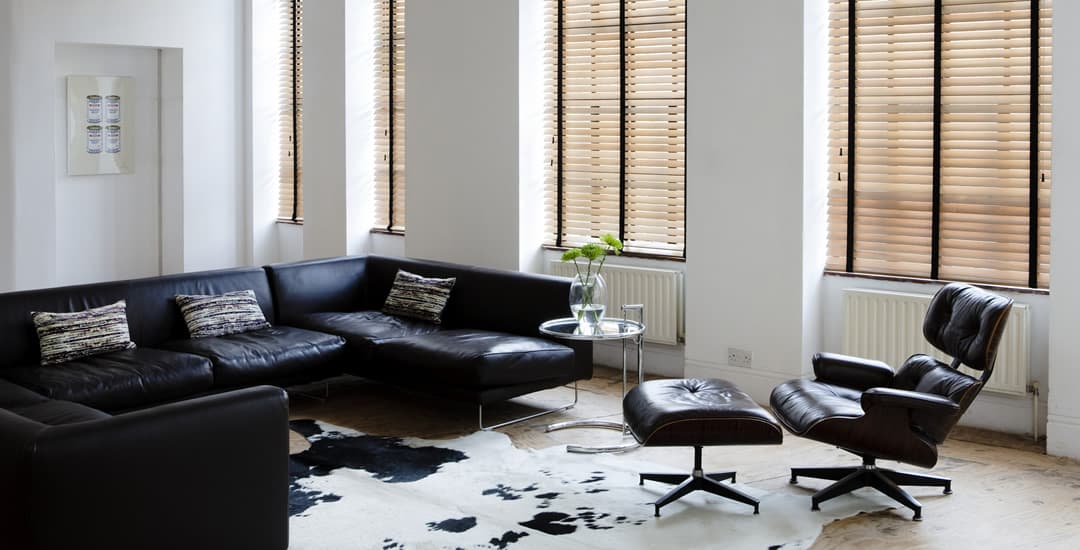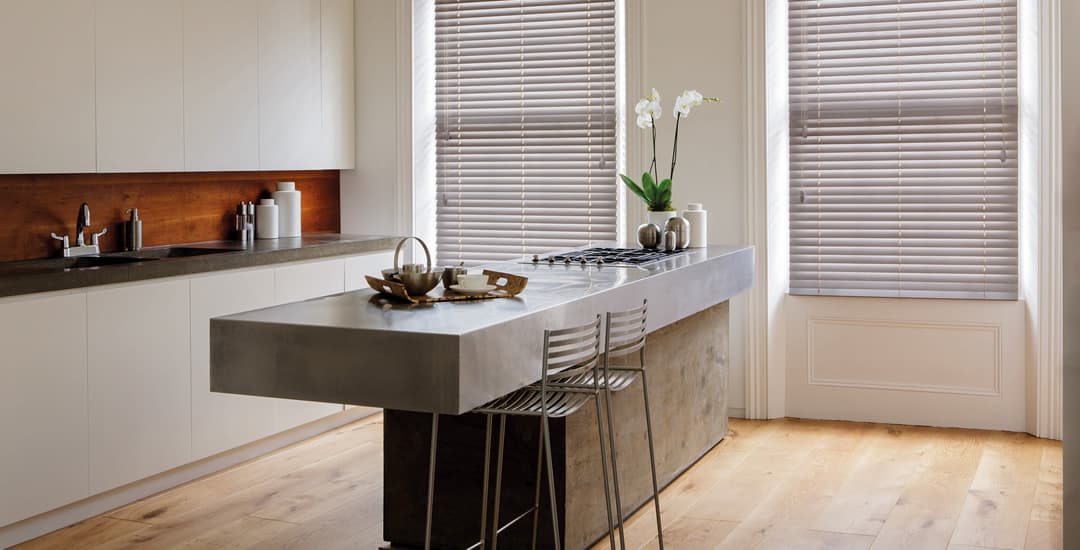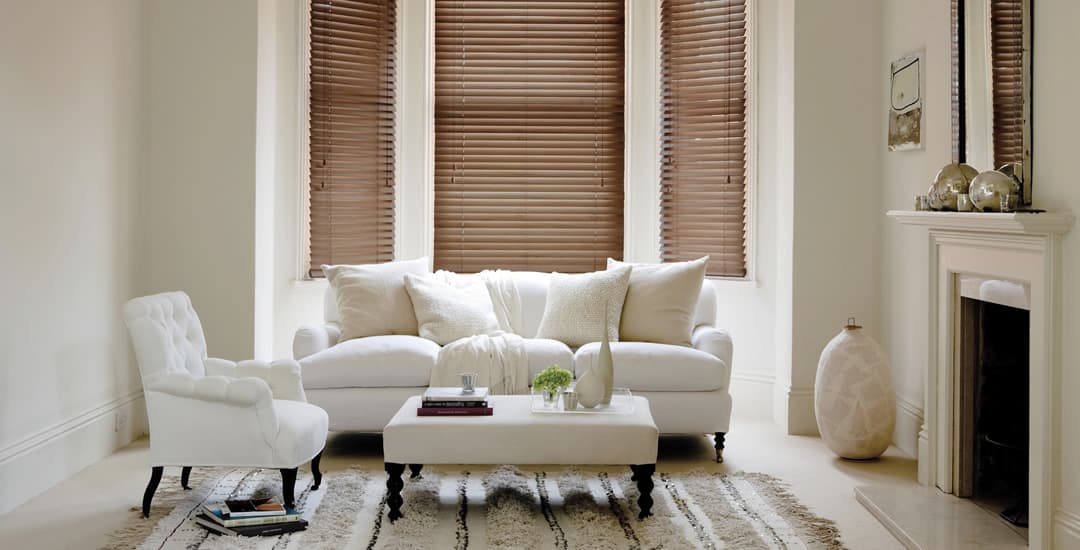
There’s not a definitive right or wrong answer here, it is more down to personal choice and the sort of effect you want to achieve. Also, whether or not wood blinds should match the floor and furniture may depend on how much wood is involved in the room as a whole, and if all of it matches without the blinds.
This blog post will provide some insights and guidance on whether or not wood blinds and the floor plus any other furniture in a room should match.
Should blinds match the floor if they’re both wooden?

Yes, this tends to result in the most cohesive and impactful look, albeit there are exceptions. If both your floors and your blinds are wooden and there is little to no other wooden furniture or wood features in the room, matching your blinds to your floors is generally considered to make the overall impression smart and cohesive.
However, if your wooden floor is dark-coloured and the use of wooden blinds in the same colour would darken the room as a whole more than you’d like, you might want to think again. It is also fine to contrast wooden blinds with a wooden floor, albeit I caution you to maintain the same tone within the colours, being either warm or cool respectively, regardless of the colour used itself.
Should wooden blinds match the flooring and furniture if you have a lot of wood in the room?

If you have a wooden floor and a lot of wooden furniture and also want wooden blinds, should all of the wood match?
This depends. Having wooden flooring plus wooden furniture that’s all the same shade is somewhat uncommon as it can make the room look very flat and one-dimensional. Having a wooden floor and painted wooden furniture is more common, and sometimes, having the floor in one wood and the furniture in another can work too, albeit this can be more of a challenge to pull off.
Should wooden blinds match the flooring and furniture then? My basic guidance is:
- If the floor and all/most of the furniture on it matches, generally you’d get blinds that match too.
- If the floor and furniture respectively are different types of wood, you would generally choose wooden blinds to match one or the other; floor or furniture respectively. As a guide, I suggest matching the blinds to the option that currently has least coverage/covers the smaller amount of visual real estate – floor or furniture – to balance things out.
- If you have a wooden floor and then wooden furniture of various different types and finishes, some perhaps matching the floor and some not, I suggest choosing a wooden blind that complements this; either matching the floor or matching some of the furniture that already draws the eye and that will make for an obviously cohesive effect with the blinds.
Do you match blinds to floors as a rule?

So far, I’ve spoken in terms of wooden blinds matching a wooden floor, but of course carpets and other types of flooring are also available!
What if the floor isn’t wooden then, do you match blinds to floors in general, even if the floor is tiled or carpeted and the blind is wooden?
Blinds plus your other stuff don’t have to be an exact match and can even contrast in terms of their colour/finish, but they should at least look as if either their cohesion or contrast has been planned and thought out, and not that the blinds were chosen at random at the end.
This may mean choosing a close or contrasting colour to the floor’s colour, or even something as simple as avoiding patterned blinds if you have a patterned floor so that it doesn’t look overly busy when viewed as a whole.
Also, as I mentioned before… Maintaining a theme in terms of the tone of colours in the floor and blinds (and room as a whole) is vital, as if this causes a clash, the whole effect will be jarring, regardless of the colours or designs in play themselves.




